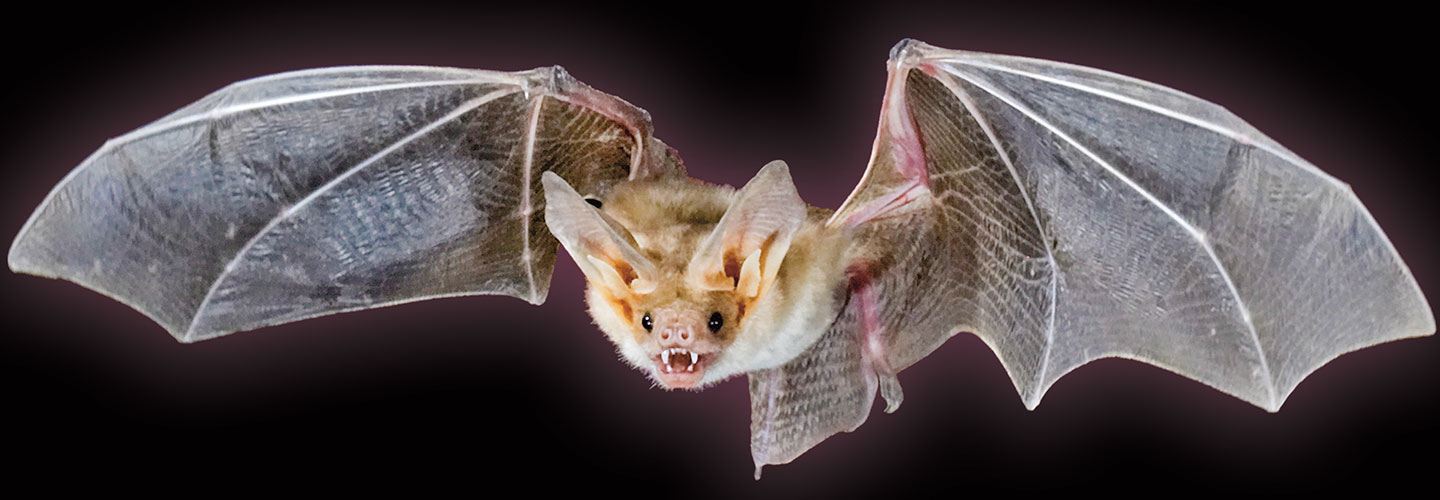Picture yourself as a little brown bat. You are tiny—half the size of an iPhone. Yet you are one of the most feared creatures on the planet.
For thousands of years, humans have hated you. They have called you names: a demon, a bloodsucker, a monster.
But you are none of those things. What you are is amazing. You can fly as fast as a car. You can swallow 1,000 insects in less than an hour.
Right now, though, it is not insects that are in danger. It is you. It’s a cold winter day in a cave in New Jersey. You and hundreds of other bats are hanging upside down, fast asleep. You’ve been hibernating here for weeks.
Suddenly, you are jolted awake. You feel strange. You are very thirsty. And hungry. So hungry!
You notice other bats waking up too. You also notice bats lying on the ground. They all have a white fuzz on their noses and wings. It looks like a dusting of powdered sugar.
You know you need food or you will die. So you open your wings and fly out of your cave across the snow. But your belly is so empty it hurts.
And crash! You hit the ground.
Picture this: You’re a little brown bat. You are tiny—half the size of an iPhone. Yet you’re one of the most feared creatures on Earth.
For thousands of years, humans have hated you. They have called you names: a demon, a bloodsucker, a monster.
But you are none of those things. You are amazing. You can fly as fast as a car. You can eat 1,000 insects in less than an hour.
Right now, though, it is not insects that are in danger. It is you. It’s a winter day in a cave in New Jersey. You and hundreds of other bats are hanging upside down, fast asleep. You’ve been hibernating here for weeks.
Suddenly, you wake up. You feel strange. You are very thirsty. And hungry. So hungry!
Other bats are waking up too. You also notice bats lying on the ground. They all have a white fuzz on their noses and wings. It looks like powdered sugar.
You need food or you will die. So you open your wings and fly out of your cave. But your belly is so empty it hurts.
And crash! You hit the ground.
Imagine that you are a little brown bat. You are tiny—half the size of an iPhone—and yet you are one of the most feared creatures on the planet.
For thousands of years, humans have hated you. They’ve called you a demon, a bloodsucker, a monster.
In reality, you are none of those things. What you are is incredible. You can fly at the speed of a car. You can swallow 1,000 insects in less than an hour.
Right now, however, it is not insects that are in danger. It is you. It’s a cold winter day in a cave in New Jersey. You and hundreds of other bats are hanging upside down, fast asleep. You’ve been hibernating here for weeks.
Suddenly, you are jolted awake. You feel strange—extremely hungry and thirsty.
You notice other bats waking up too. You also notice bats lying on the ground. They all have a white fuzz on their noses and wings. It looks like a dusting of powdered sugar.
You know you need food or you will die, so you open your wings and fly out of your cave across the snow. But your belly is so empty it aches.
And crash! You hit the ground.

